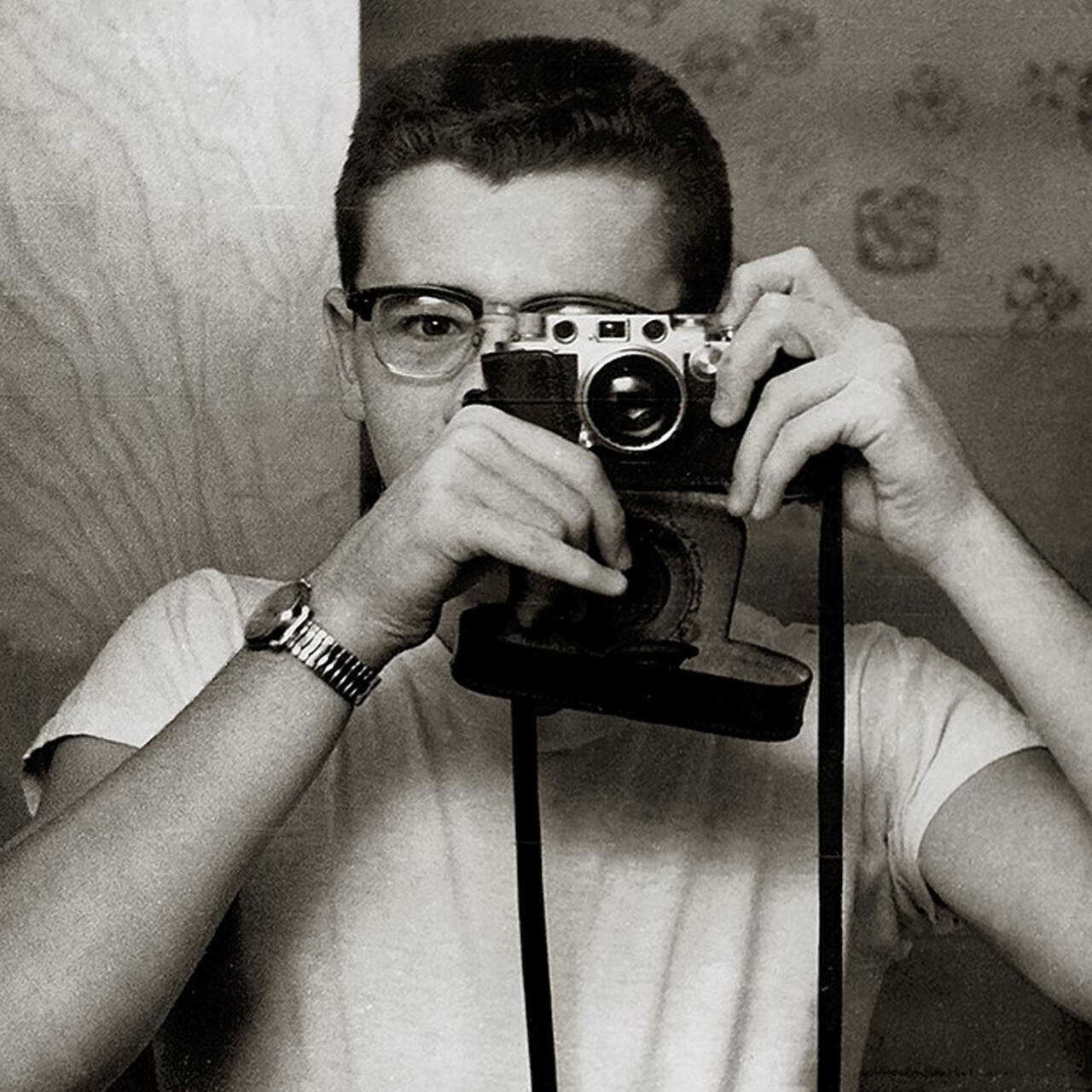The artist LENA HENKE already exhibited in the SCHIRN Rotunda in 2017. What are the secrets of her practice and where can you find her art today?
“I don’t know,” says Lena Henke, with a look of bemused mischief, “maybe I’m a fetishist!” Half-joking, she grins and looks up, as if searching for answers in her mind’s eye, laughs, and shrugs it off. That’s entirely appropriate. This isn’t even the first time she’s said this to me. She said it 5 years ago before the opening of her solo exhibition at LAYR, Vienna. It was funny back then, too. Both times, it provided a strange, crooked key to unlocking the secrets of her practice. But this was only clear the second time.
This characterises Henke’s work: not just the jokes, but how she structures time so that what she’s done only makes sense later. Analysing the gag gives us an insight into her practice. Her use of materials is always a response to the space they are in, physically and institutionally, making viewers question the way they normally use their senses, and renewing them by repositioning their bodies. This allows the different elements (materials and concepts, forms and places) to reflect each other, ultimately subverting the very idea of what is “inside” or “outside” a work of art at all.
Consider, for example, “SCHREI MICH NICHT AN, KRIEGER! (DON’T SHOUT AT ME, WARRIOR!)“, for the SCHIRN Rotunda in 2017. Here, Henke placed two aluminium sculptures at each of the space’s two entrances. The objects, open at the top, were filled with sand, as were the circular galleries surrounding the Rotunda. The sand then seeped into the sculptures, guided by rolling grills made of coarse-meshed metal, and the accidental (but still planned) actions of viewers, who influenced its circulation as they moved around the space. This made the true form of the aluminium objects – two oversized eyes – visible, but only if the viewer moved their own bodies or position in the museum space. The change in perspective thus gave them access to newly-visible combinations of shapes, colours, materials, lights, and reflections. The blunt implication is the pain of getting sand in your eye. The process by which Henke makes that point is more layered.
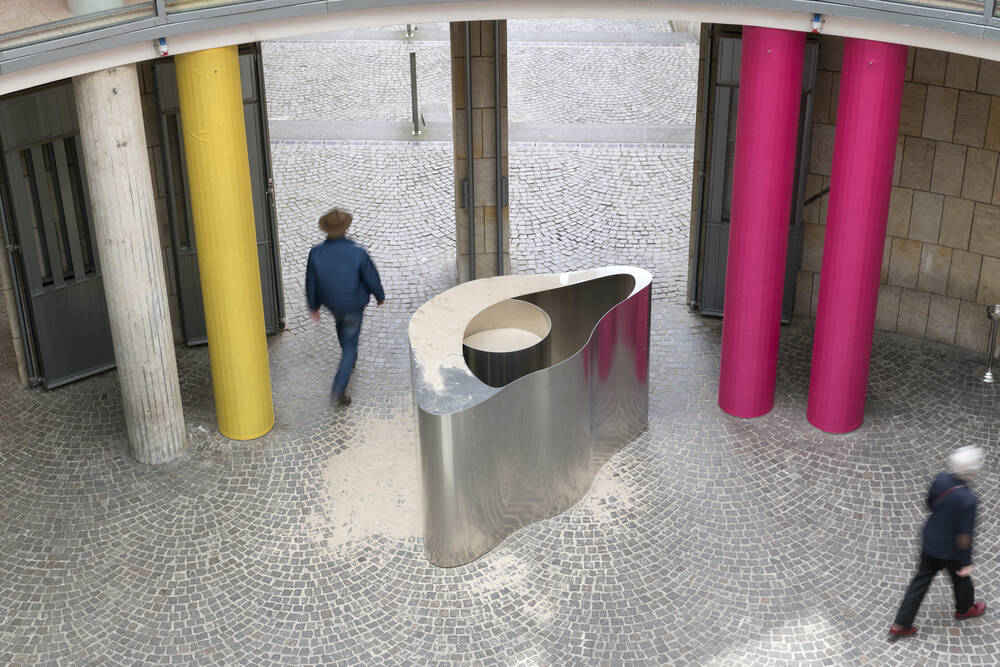
Just like her fetishism joke, “DON’T SHOUT AT ME, WARRIOR!“ is an example of Henke’s process, whose structure we can find elsewhere: in “THEMOVE” at LAYR, Vienna a year later; in “Las Pozas“ (2017), Henke’s contribution to the 2021 edition of Lichtenfels Sculpture; and “You and your vim” at Aspen Art Museum, Colorado (2023).
FROM THE SCHIRN TO VIENNA, LICHTENFELS AND COLORADO
She always starts off with the idea of something that the viewer can look at with their own eyes from a static position. In the case of the SCHIRN Rotunda, that’s the fact that the aluminium sculptures were there and how something Henke adds to the surrounding space completes them by changing them. Something the viewer couldn’t see at first (the sand, the filtering process), turns the original form into something new, concealing the first iteration and blocking viewers from being able to unsee the change. The work thus only fully reveals itself later, after the viewer has gone through a process guided by Henke, adapting their bodies to the space, which becomes part of the work.
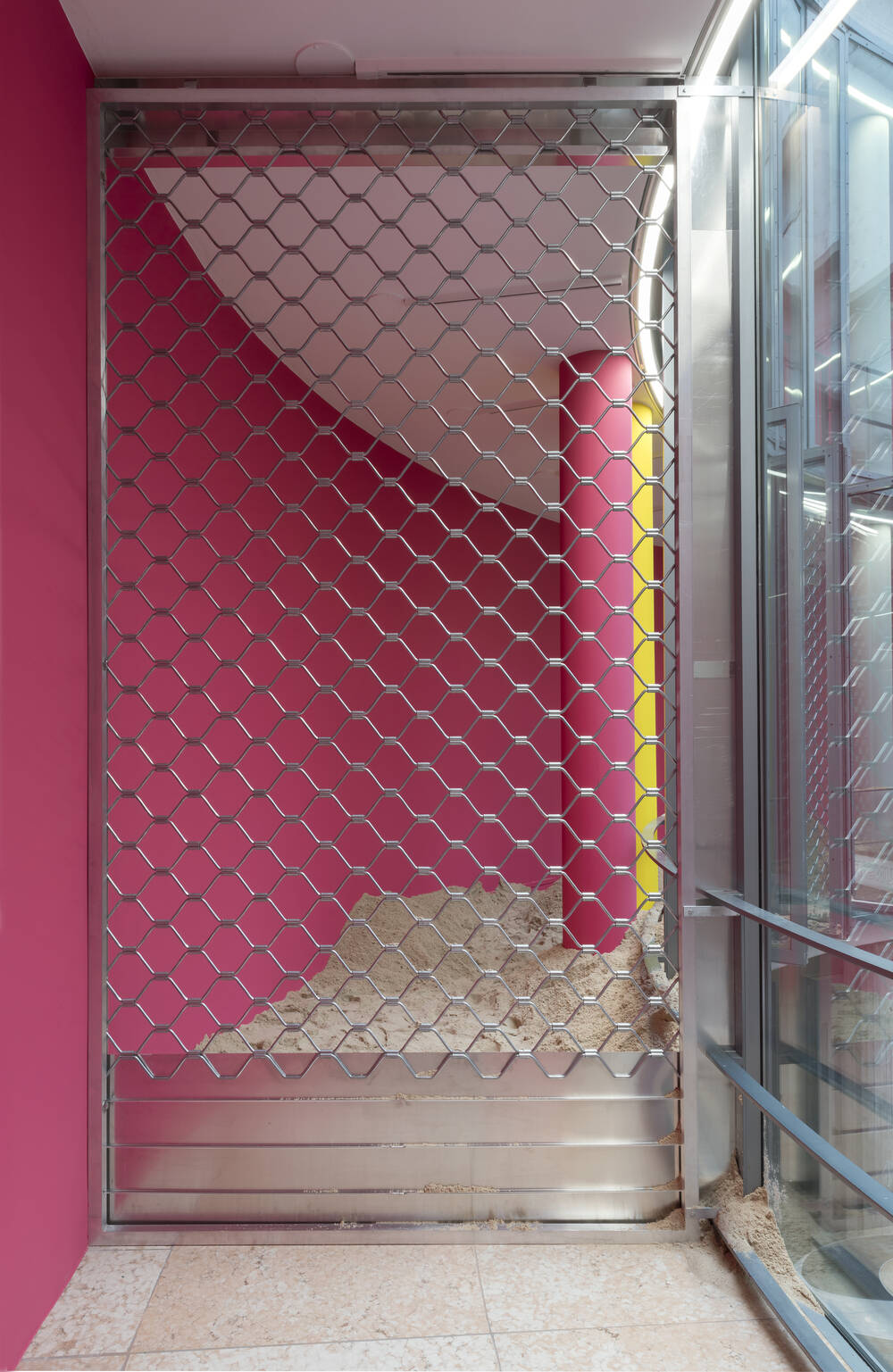
In short, Henke always adds one external condition to the viewer’s simple act of looking, which they didn’t question at first, that permanently changes the work’s form and relation to the space around it.In the case of a work that is completed by the addition of the extra element, which requires us to do some work to have our vision completed for us, and then questioning the way we see anything in the first place. the extra conditions were the sand and the space of the SCHIRN Rotunda itself. However, the concept for this piece – including both the aluminium eye sculptures and the transformation caused by a secret third element – were built on yet another unseen layer: “Las Pozas“ (2017).
"Las Pozas"
This piece isn’t just a different or earlier iteration of the staring metal eyes, but another expression of the same conditions. In this case, Henke used mirrors to do it: strategically placed on walls and trees, the angles shaped the viewer’s gaze so they could look directly into the sculptures in a way that would otherwise have been impossible from the angle they were first standing in.
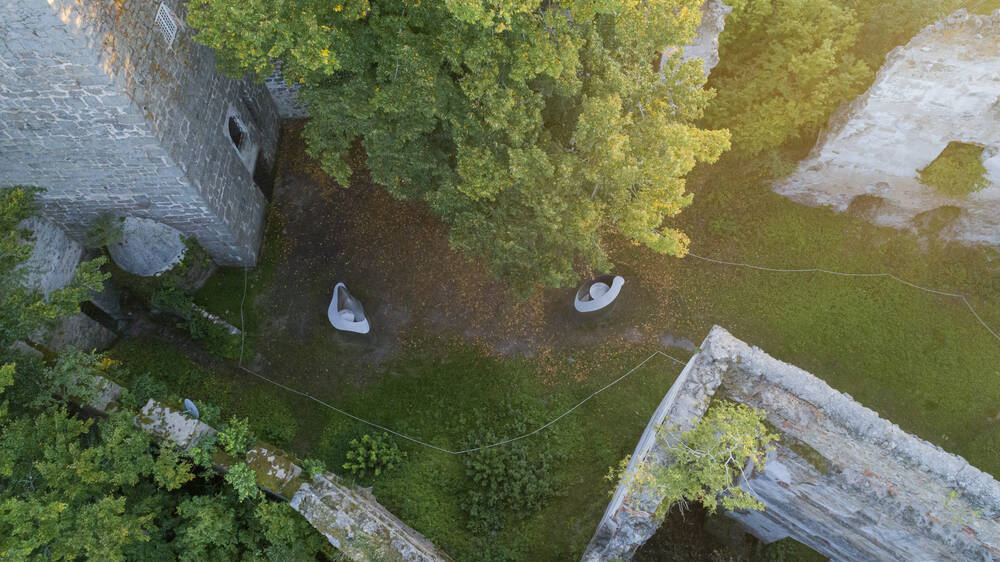
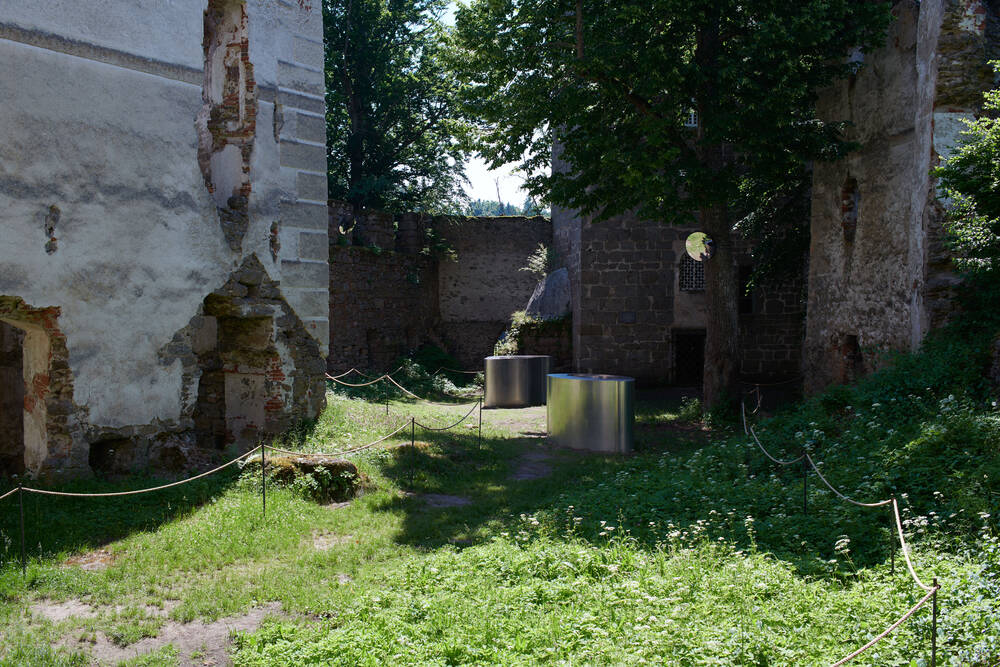
It doesn’t matter that “Las Pozas“ is from the same year as the SCHIRN Rotunda but shown later because the principle is this same. However, where it was the viewer’s movement around the SCHIRN Rotunda that generated another process, “Las Pozas“ relies on Henke creating a parallax view. This completes our act of seeing for us, and then fulfils the way we see Henke’s other work – including “DON’T SHOUT AT ME WARRIOR!” – once we are aware of it, serving as a metaphor for Henke’s artistic and the conditions under which we see things at all.
This structure is evident, again, in “THEMOVE“ (Aspen) (2023), from “You and your vim” at Aspen Art Museum, Colorado. Here, however, we get not only the visual structure from “Las Pozas“ and the SCHIRN rotunda, but the repetition of the sculpture from “THEMOVE” at LAYR, Vienna, and the bodily positioning needed to complete the work. The centrepiece of that exhibition was “THEMOVE“ (2018), a bronze sculpture of a female body with a door where her vagina would normally be. If the viewer positioned their body in a very specific part of the space, they could see “Freedom Tower“ (2018) a digital print of the New York City skyline, dominated by the blunt phallic imagery of One World Trade Center.
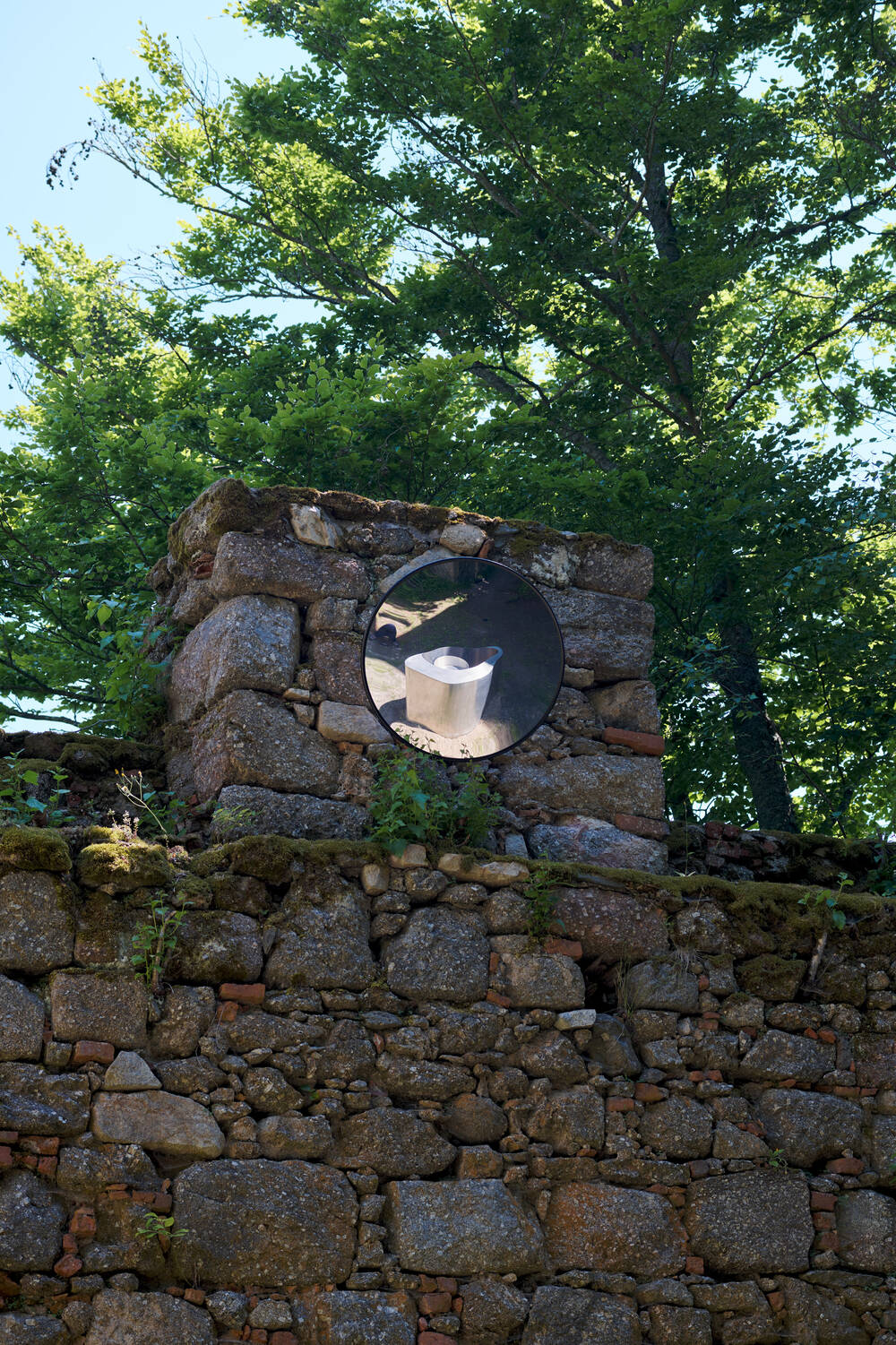
THEMOVE“ (Aspen) renews the site-specificity of the Vienna sculpture. This time, however, the viewer’s gaze looks not onto another image, but the museum’s architecture and geographic setting. In the foreground, the reflective aluminium fence that surrounds the outdoor terrace, and with it a distorted reflection of the very sculpture we are looking at; then a functional-looking one-story building; beyond that a different version of an “American” landscape – not the crowded urban jungle of New York City, but the natural sublime of the snowy Rocky Mountains, crowded by fir trees.
the essentially fetishistic nature of looking at art
If, however, the viewer looks at “THEMOVE” (Aspen) from yet another angle, they can see three examples from the “Combustions” series (2023), all of which are oil engravings on laser-etched leather – she discovered a technique for how to do this – based on photographs of bare male feet squeezed ungracefully into exploded condoms. This brings us back to her joke: “I’m looking for the connection between different fetishistic items,” she says, “But it’s not about sex. It’s about something else: how you go through life, and the surfaces of materials and objects”.
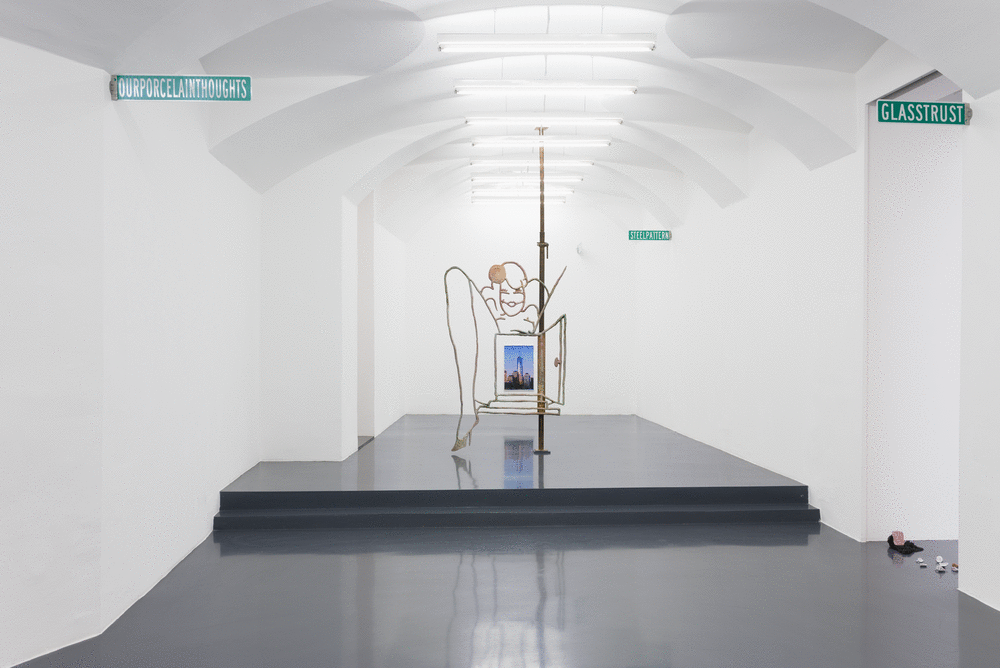
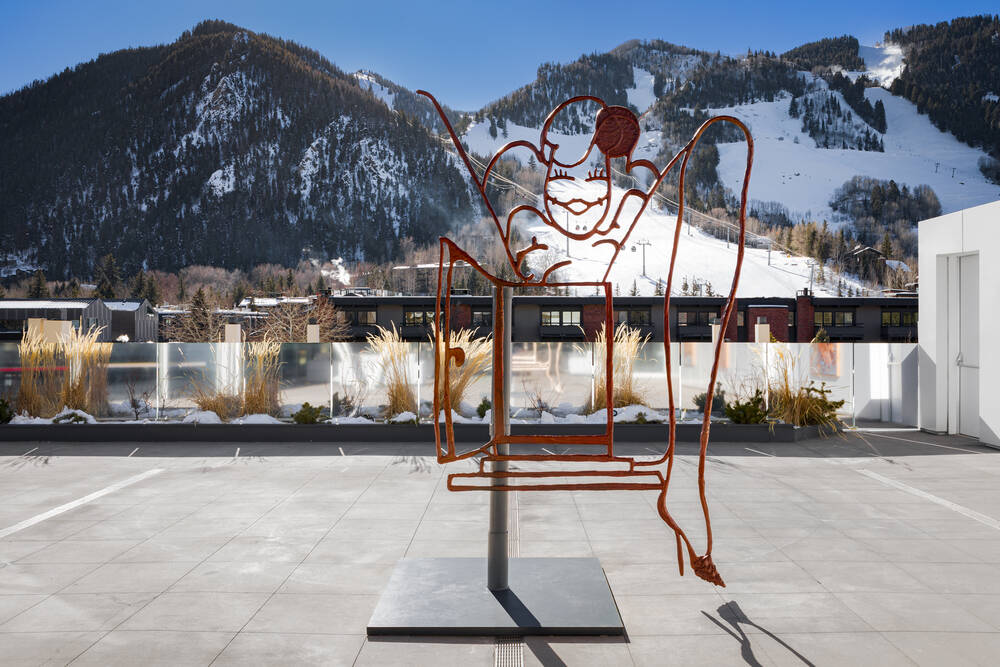
This is crucial, emphasising how this dynamic is present in all her work. It’s not, then, that Lena Henke is a fetishist. Nor is anyone else. She is, rather, exposing the essentially fetishistic structure of looking at works of art. The eyes, vaginas, pole dancers, feet, or condoms are less important than the relation between the gaze, the object, and the space, mediated by the artist, to make a basic point about what counts as “inside” or “outside” the work. What we think is inside is only there because of some extra thing Henke brings to it from the “outside”, but we can only see it for ourselves once she’s made us move – that includes our bodies and the space we occupy.
The SCHIRN works, for example, were placed in a covered area in between the museum and the café. This repositions the museum-goer’s fetishistic gaze by emphasising the relationship between spaces for art and non-art (in this case, eating, drinking, chatting, looking at souvenirs from the gift shop). The conditions in Lichtenfels don’t require a critique of art’s commercial status, but they do make other physical demands on the viewer, since they have to go out of the way to see it for themselves before Henke upends the very act of seeing. In Aspen, meanwhile, the works were placed on the rooftop terrace – Henke reminds us that such a space is “between a white cube and outdoor space” – that part of typical museum architecture, looking out over the epitome of raw, wild nature that humans can’t tame by building things on it.
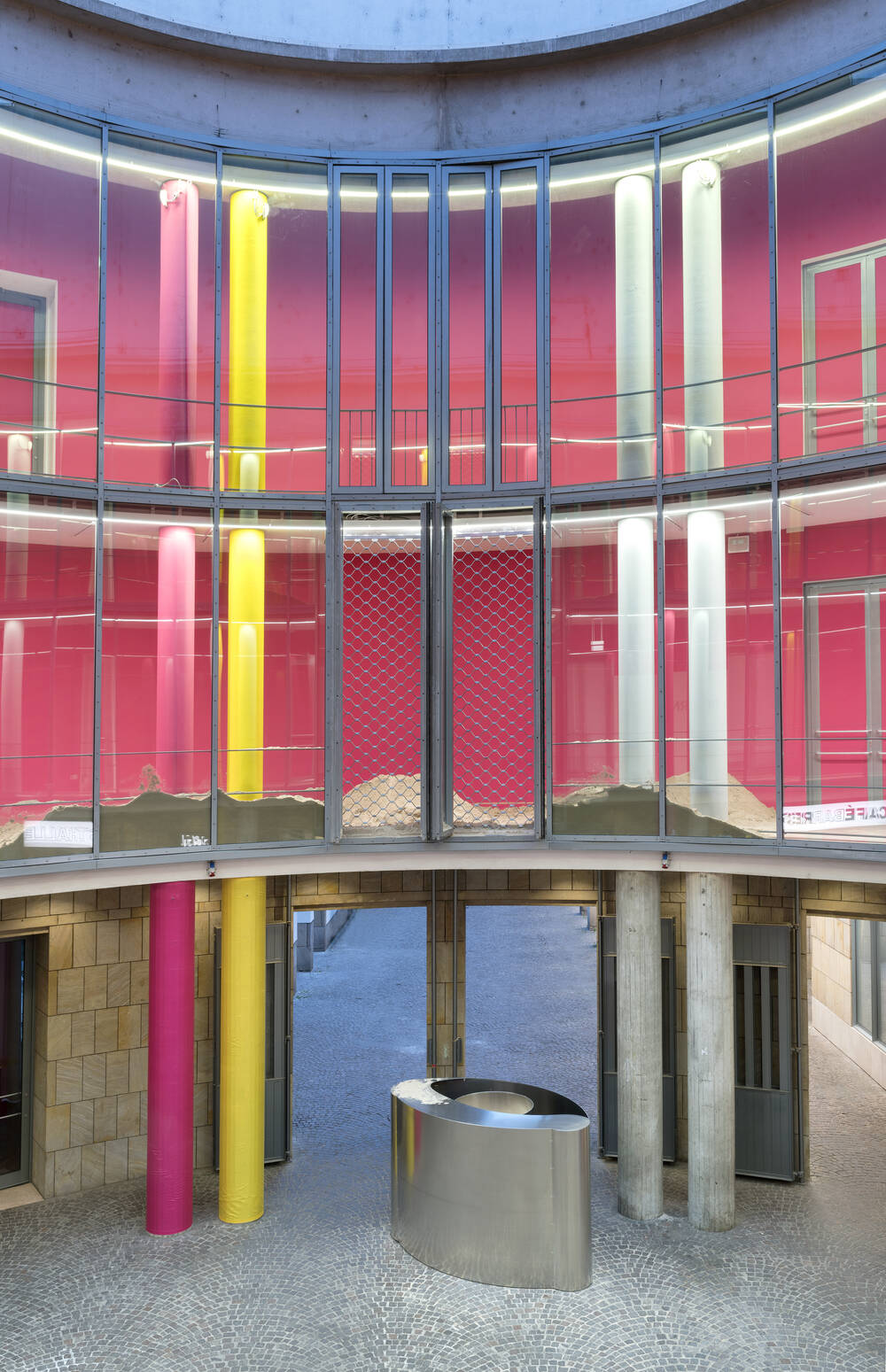
The link between all these exhibitions is then very clear. Henke exposes us not just to the static, fascinated gaze that is expected of us when we go to see works of art, but a suppleness to the act of looking. We have to be willing to let someone restructure our gaze for us. This is a far more comfortable commitment when it’s a work of art, but it has lessons to teach us about how to do this in non-artistic situations, too.
Using our feet as much as our eyes
This sneaky playfulness is what leads the artist to, say, steal leathery works from deserted ranches in Utah, or risk burying SCHIRN’s Magritte exhibition – on display at the same time as her Rotunda intervention – in sand. It's the kind of playfulness that secretly, laughingly guides the viewer’s act of looking and walking as they create “desire paths” as they move between the works. And that means using our feet as much as our eyes. You get the picture.







